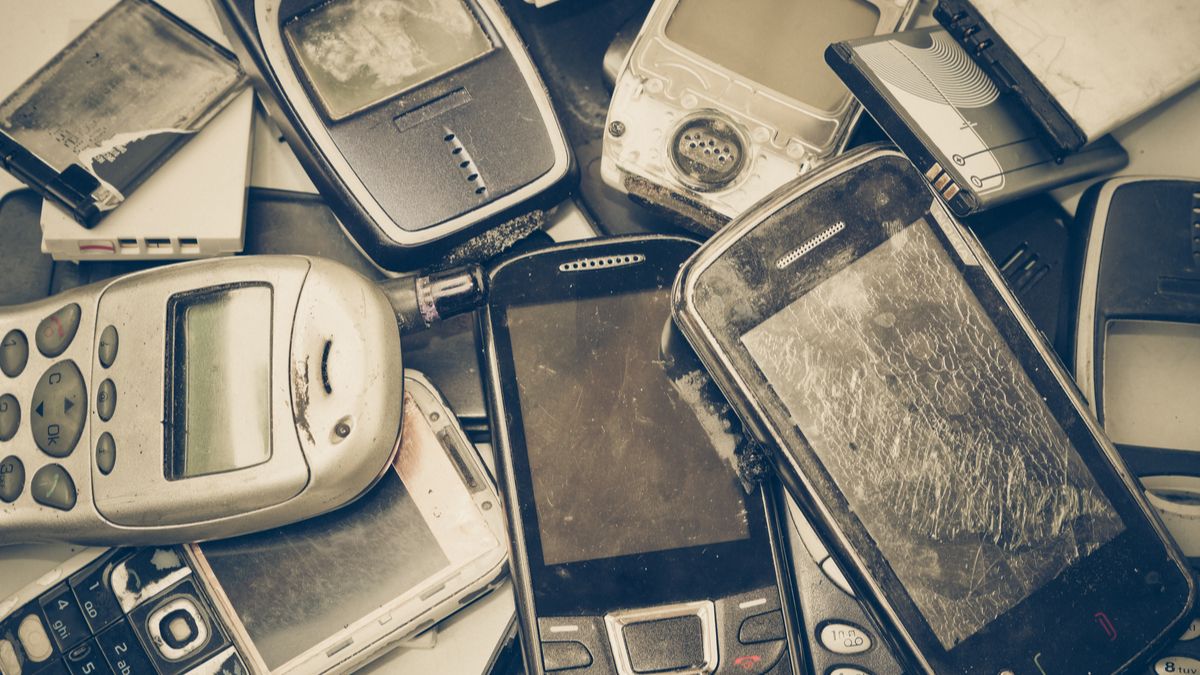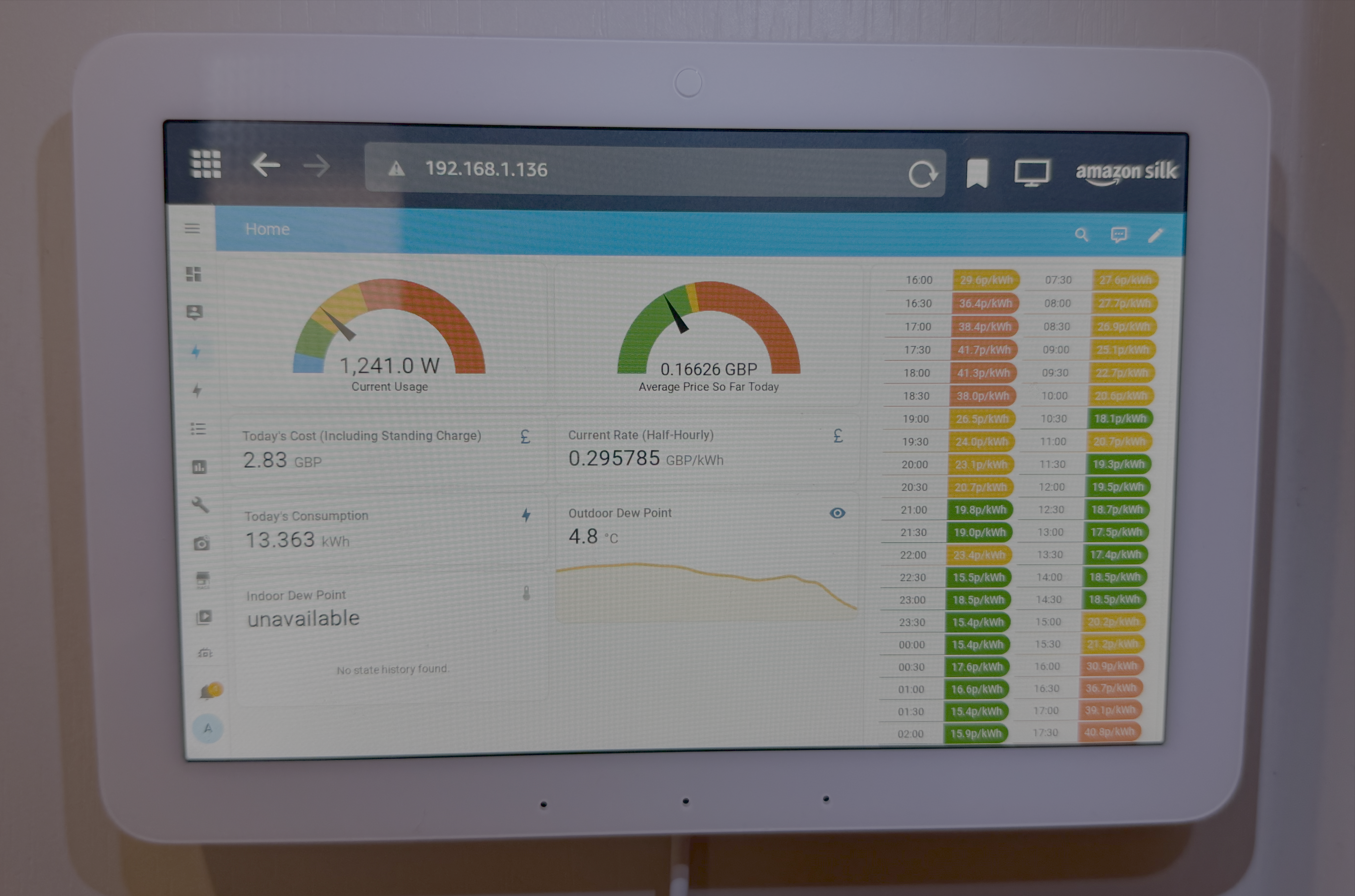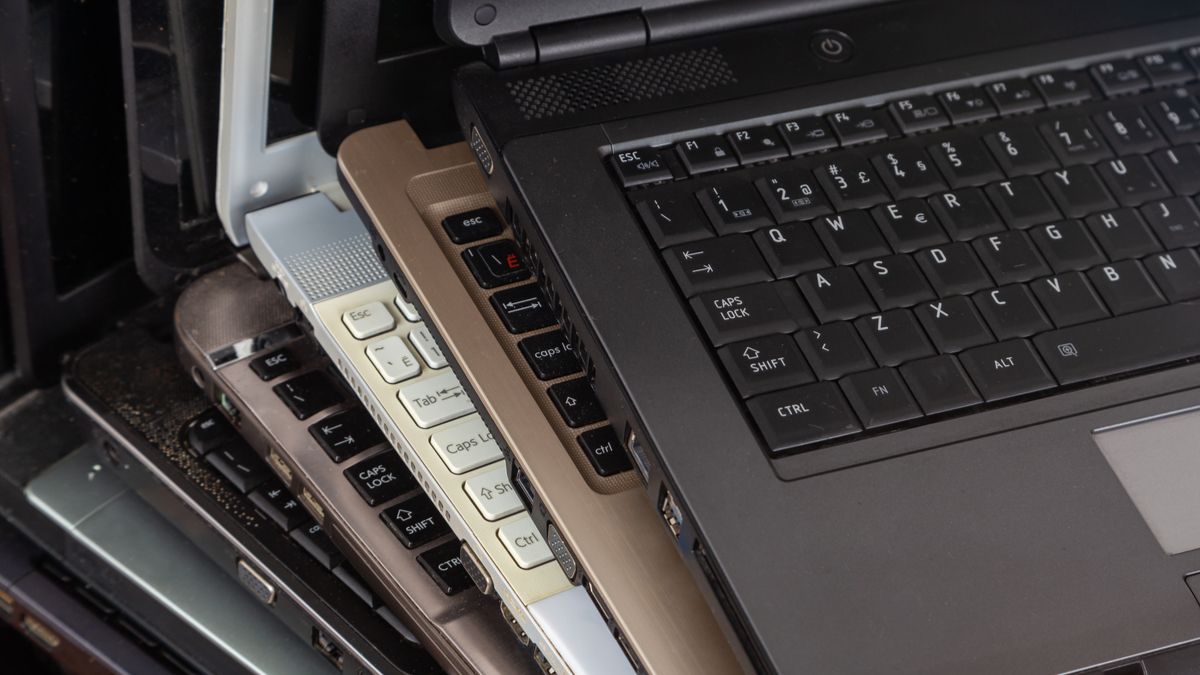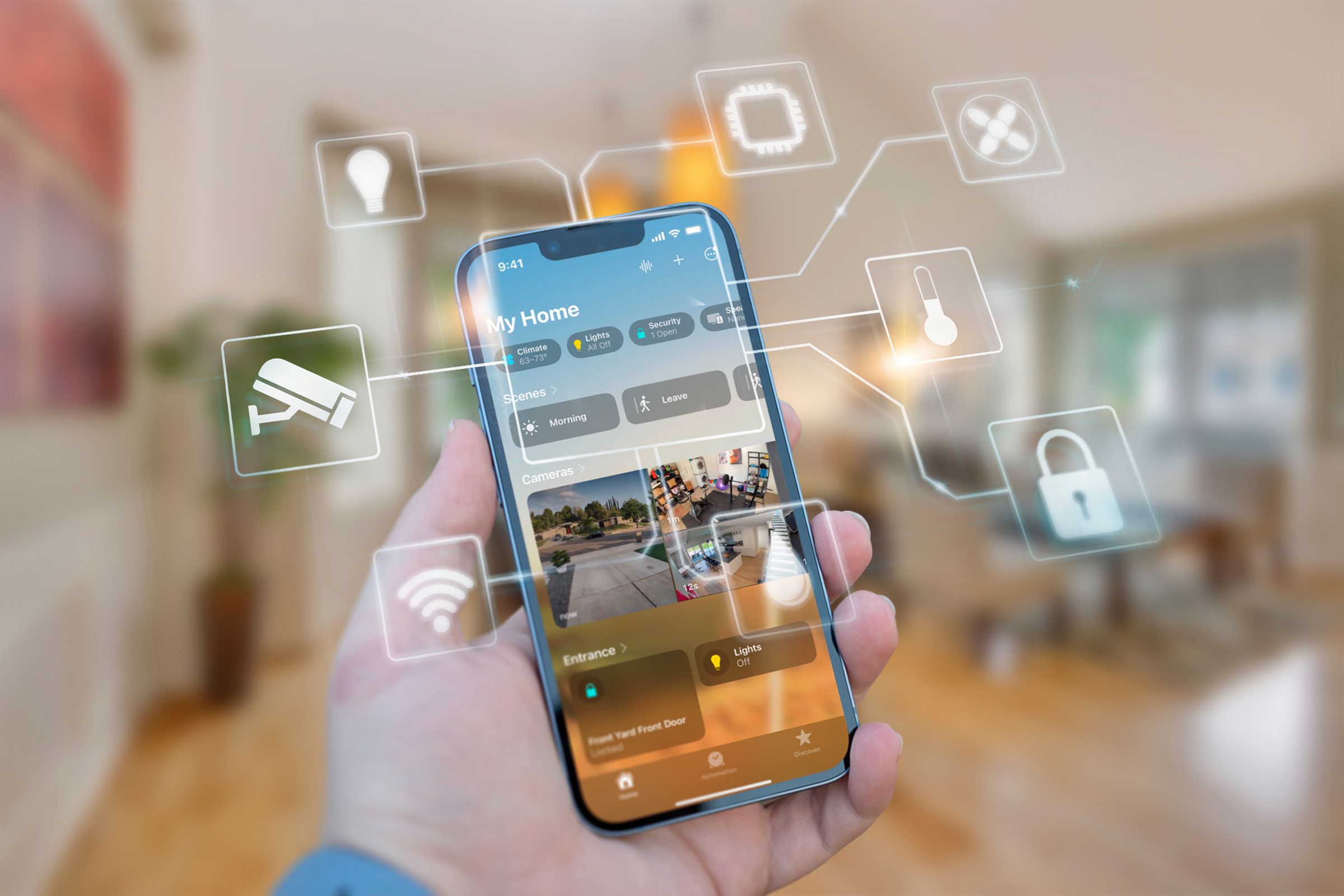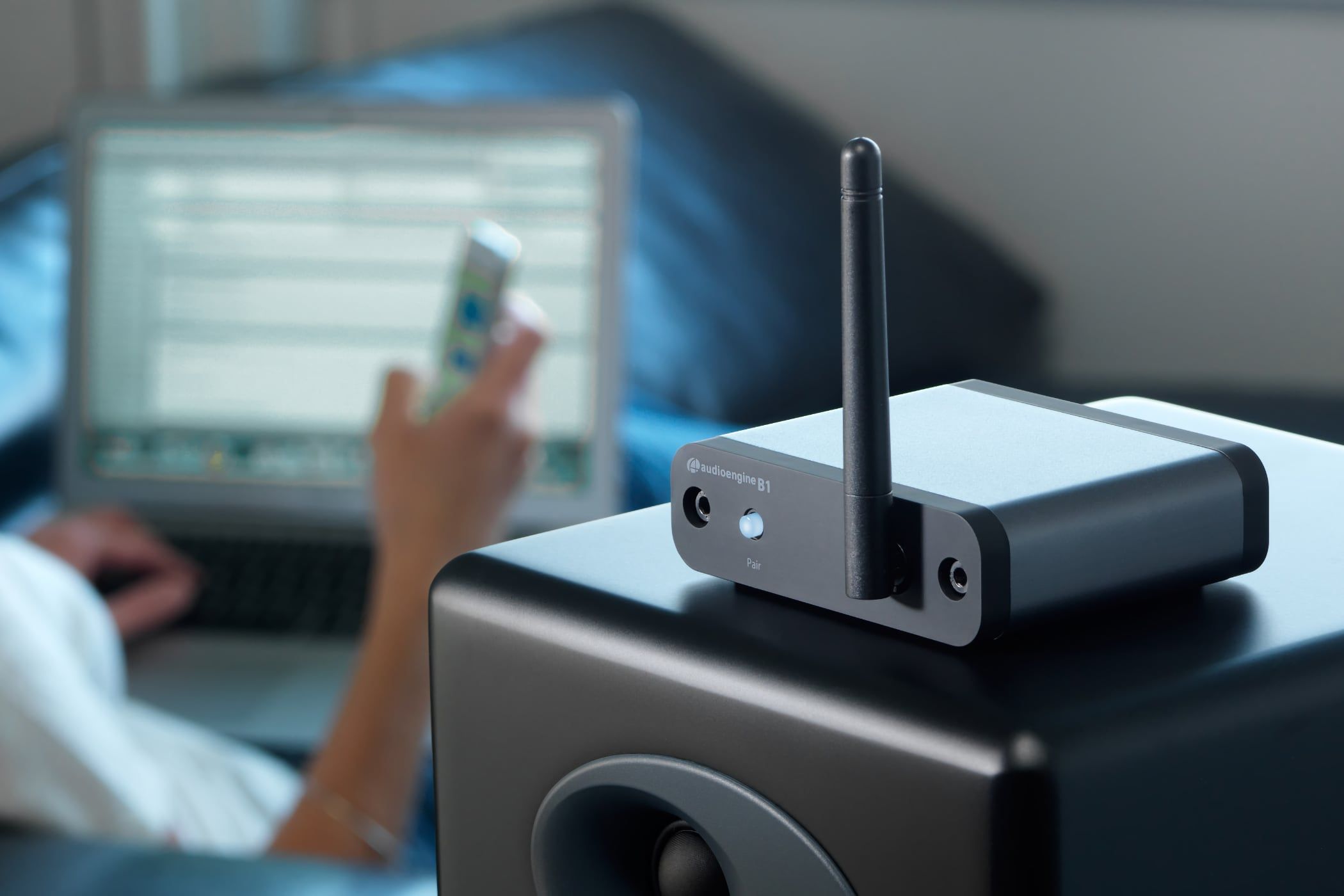New models of smartphones get released on a constant churn, and even if you don’t upgrade every year, it’s a safe bet that your current phone is not your first. The chances are that you have some old phones lying around your home. The same is probably true of other devices such as tablets and e-readers.
Old devices don’t need to gather dust in a box in your garage, however. As long as they’re in working order (and you can find the right chargers) you can still put them to good use in your smart home.
Use Old Phones as Security Cameras
Upgrading your smartphone can be a fairly regular occurrence. You might trade in your old model or pass it on to a friend or relative, but if you have an old phone lying around, you can put it to good use.
I used an old iPhone 4S as a baby monitor when our kids were younger, and it worked perfectly. I even found an app that allowed me to view the feed from the iPhone on my Apple Watch. It meant that if I wanted to check what was happening in the nursery, I could just glance at my watch and see exactly what was going on.
Even in older smartphones, the cameras are usually high-quality, and there are plenty of ways to incorporate them into your smart home. For example, the Android IP Webcam integration in Home Assistant turns any Android phone into a network camera,
Tablets Can Be Repurposed as Dashboards
I’m not a huge fan of dashboards for smart homes. My take is that if you have to get up and press a button on a dashboard to make something happen, then your home isn’t really that smart. I much prefer home automation, where things happen by themselves without you needing to do anything.
That said, smart home dashboards can be useful for accessing information at a glance. I have an Amazon Echo Hub, and I never use it to control anything in my smart home anymore. Instead, I have it showing a dashboard with information about my electricity usage and the upcoming half-hourly prices. That way, at a glance, I can see when it’s the cheapest time to put the dryer on.
Old tablets can be a cost-effective way to create your own smart home dashboards. The trickiest part is mounting it in a way that doesn’t have messy cables hanging out of it, but once it’s up, it’s an easy way to monitor and control your smart home.
Turn an Old Laptop Into a Smart Home Hub
If you want to run smart home software such as Home Assistant, there are plenty of devices you can use. Many people start out with a Raspberry Pi, since they’re cheap and sip power, but you may already have a device lying around that will do the job.
If you have an old laptop that you’re not using, for example, you can put it to use as a Home Assistant server. While it may seem like overkill to run Home Assistant on a computer with a screen that you’re barely going to use, it can save purchasing a dedicated machine.
Some people choose to remove the battery and just have it running on power so that there aren’t any issues with the battery. Others leave it powered on with the battery still in place as a backup should the power ever go down.
Turn a Phone Into a Smart Home Remote
One of the biggest issues I have with smart home dashboards is that if you want to use one, you have to get up and go to where the dashboard is. If it’s in another room or even in a different part of the room you’re already in, it’s a chore that doesn’t feel very smart at all.
If you have old smartphones, you can turn them into smart home remotes that you can leave lying around your home or even carry around with you. You can get your smartphone to display a dashboard that you’ve optimized for the smartphone screen or even just use it as a remote for your smart TV or streaming device. It’s much easier to keep a smartphone at hand than to rely on a wall-mounted dashboard.
Use Old eReaders as Portable Dashboards
Tablets aren’t the only old tech devices that you can turn into dashboards. If you have old Kindles or other eReaders that you’re not using because you’ve decided to go back to physical books, you can transform these into smart home dashboards, too. While the monochrome screen of most eReaders gives you a minimalist look for your dashboard, there are some major benefits to using one.
Since the screens of eReaders use much less power than tablets, they can last for several days between charges. This means that you can use your eReader dashboard without it having to be connected to power all the time. It effectively gives you the best of both worlds, with the large display of a tablet combined with the portability of a smartphone remote. An eReader dashboard also looks ridiculously cool.
Setting up an eReader as a smart home dashboard isn’t as simple as using a tablet, however. With a tablet, you can be up and running in moments just by pointing the tablet’s browser at your Home Assistant address. With an eReader, you may need to jailbreak the device first before you’re able to get the dashboard to display.
There’s no real downside to doing this with older devices, however. If it was rotting away in a box somewhere anyway, then the risks of bricking it by trying to jailbreak it aren’t that huge.
Add Bluetooth Receivers to Old Sound Systems
Sound systems can last a long time. My Dad passed down his old 1970s sound system to me, and it kept me going for years, with gorgeous sound from the wood-paneled Goodmans speakers. In fact, sound systems can last so long that they often outlast the mediums they were designed for.
My surround system, for example, can play CDs and DVDs, but I don’t own many CDs anymore. It’s by far the best sound system in my living room, but I was still listening to music on a smart speaker with far worse sound quality.
By adding a Bluetooth receiver, however, I can now stream music to my surround system from my phone or Home Assistant. While Bluetooth only supports stereo, so I can’t take advantage of the full surround sound setup, it still gives me much better sound quality when listening to music.
A lot of tech devices become obsolete long before they stop working. I still have a second-generation iPad that is fully working, but the vast majority of apps aren’t supported on it anymore. Rather than throw it away, however, it can be put to use in any number of ways, from a smart home dashboard to a monitor for a security camera.
Just because tech is no longer fit for its original purpose, doesn’t mean there isn’t still life in it yet. Not only is it good for your pocket, but making use of older devices should be better for the environment, too.


